Open floor plans are a very popular architectural feature nowadays. They often offer increased natural light, smoother traffic flow, and easy communication. This makes them a popular choice for families when it comes to choosing a home. However, if your home doesn’t already have an open floor plan or you just want to open up a room to increase its square footage, you may be considering removing a wall. This will likely involve the need to remove drywall and can result in some dusty work.
It is important to examine the basement for additional structural elements like walls or beams that provide support beneath load-bearing walls, as these can influence your renovation decisions.
While removing a wall can often be done, there are a few things you must consider to successfully remove a particular wall in your home.
Introduction to Wall Removal
Removing an interior wall can be a fantastic way to open up your living space and create a more modern, open-concept floor plan. However, before you dive into a wall removal project, it’s crucial to determine whether the wall is load-bearing or non-load-bearing. A load-bearing wall supports the weight of the roof and any upper stories, making it a critical component of your home’s structure. On the other hand, a non-load-bearing wall does not carry any weight and primarily serves as a partition between rooms.
Understanding the difference between these two types of walls is essential for a safe and successful project. Removing a load-bearing wall requires additional support, such as beams, to maintain the structural integrity of your house. In contrast, non-load-bearing walls can be removed without the need for structural supports, making the process simpler and less costly. By determining whether your wall is load-bearing or non-load-bearing, you can plan your project accordingly and ensure a smooth transition to your new open space.
Assessing the Wall Type
Before you embark on your wall removal project, it’s crucial to assess the type of wall you want to remove. There are two main types of walls: load-bearing walls and non-load-bearing walls. A load-bearing wall supports the weight of the roof and any upper stories, making it a critical component of your home’s structure. In contrast, a non-load-bearing wall, also known as a partition wall, does not carry any weight and primarily serves to divide rooms.
To determine if a wall is load-bearing, you can start by checking the floor joists and ceiling joists. If the wall runs perpendicular to these joists, it is likely a load-bearing wall. Additionally, exterior walls are almost always load-bearing. For a more accurate assessment, you can consult the original blueprints of your house or hire a structural engineer. Identifying the type of wall will help you decide the best approach for your wall removal project and ensure that you hire professionals if necessary.
Is it load-bearing?
Unfortunately, if the wall you’d like to remove is load-bearing (i.e. it supports part of the structure of your home), it’s going to be more difficult and expensive to remove. Proper beams must be installed to support the structure after removing a load-bearing wall. However, it still can be done! Hiring an experienced contractor and having a professional structural engineer assess your home’s structural integrity will allow you to safely remove the wall without any issues. Removing a load-bearing wall will be around $1,200 – $10,000 while removing a non-load-bearing wall is going to cost more like $300 – $1000.
Additionally, considering adjacent walls is crucial to prevent damage to surrounding surfaces and to accurately estimate the cost and effort involved in the removal process. Another option to improve your home’s aesthetic and functional space is raising ceilings in older homes. This can make rooms feel more spacious and modern, but it is important to consult professionals for such structural changes.
If it’s load-bearing, do you know what you want to replace it?
Load-bearing walls help support the weight of your home above, so to remove a load-bearing wall, you need to have something replace it, including cutting through the top and bottom plates. It is important to remove the top plate first to ensure safety and efficiency. Many individuals opt for steel beams or half walls or pass-throughs to replace a load-bearing wall.
Creating new spaces and transforming areas into more open and functional designs requires careful planning, especially when dealing with structural elements like load-bearing walls.
If you’re trying to open up your kitchen, placing a countertop on a half wall is a great way to create a breakfast bar or another nook that you can use. Finally, carefully remove the bottom plate by cutting and prying it away from the subfloor.
Handling Non-Load Bearing Walls
Removing non-load-bearing walls is generally a simpler and less costly process compared to load-bearing walls. These walls do not support any weight, so you won’t need to install additional structural supports. However, it’s still important to handle the removal process with care to avoid damaging adjacent walls or the ceiling.
Start by turning off the electricity to the area and removing any electrical outlets or switches from the wall. Use a utility knife to score the drywall along the edges, then use a pry bar to carefully remove the drywall. Once the drywall is removed, you can proceed to remove the studs. Be sure to wear protective gear, including gloves and safety glasses, to prevent injury. After the wall is removed, you can repair the ceiling and floor to create a seamless open space. If you’re not comfortable with the process, consider hiring a contractor to ensure the job is done safely and correctly.
Do you have plans for the wiring, ductwork, or plumbing that runs through the wall?
Even interior, non-load bearing walls often have electrical wires, ductwork, or plumbing that runs through them. To remove the wall, you’ll need to either move or terminate any of the wall’s interior elements. It is crucial to identify plumbing pipes before starting any demolition to avoid potential risks. Especially if you don’t have any experience with construction, it’s smart to have an experienced contractor figure out the best place to move those essential pieces of your home. Additionally, handling electrical outlets safely is important to prevent hazards.
Safety Considerations
When it comes to removing a wall, safety should always be your top priority. Demolition work can be hazardous, so it’s essential to take the necessary precautions to avoid injuries. Start by wearing sturdy work boots, good work gloves, a long-sleeved shirt, a particle mask, eye protection, and hearing protectors. These items will help protect you from dust, debris, and potential hazards.
Using a sledge hammer can be highly effective for breaking through drywall and removing studs during the demolition process.
Additionally, ensure that the area is well-ventilated and use a dust-containment system to minimize the spread of dust and debris throughout your home. Before you begin, turn off the power to all electrical circuits in the wall you plan to remove. Double-check that the power is off before disconnecting and removing any wall switches and outlet receptacles. If you’re unsure about any aspect of the project, it’s wise to hire professionals who can ensure a safe and successful outcome.
Preparation for Demolition
Proper preparation is key to a successful wall removal project. Before you start the demolition, make sure to turn off the electricity, water, and gas supply to the area. This will prevent any accidents during the demolition process. Remove any furniture, fixtures, and flooring to protect them from damage. Cover the floor, walls, and ceiling with drop cloths or plastic sheets to contain the dust and debris.
Use a reciprocating saw to cut through the studs and a pry bar to remove the drywall and studs. Wear protective gear, including a dust mask, safety glasses, and gloves, to prevent injury. It’s also essential to have a plan for disposing of the demolition debris. You can hire a dumpster or take the debris to a landfill. By being prepared, you can ensure a safe and efficient demolition process.
Walls with Multiple Functions
Removing walls with multiple functions, such as those containing electrical wires, plumbing pipes, or HVAC ducts, requires special attention. Before you start, identify the location of these utilities to avoid damage or injury. You may need to hire professionals, such as electricians or plumbers, to relocate or disconnect these utilities safely.
Additionally, you may need to obtain a building permit and have the work inspected to ensure it meets local building codes. Removing walls with multiple functions can be challenging, but with careful planning and execution, you can create a beautiful open space while ensuring the safety and functionality of your home.
Cost and Time Considerations
Removing a wall can be both a costly and time-consuming endeavor. The cost of removing a non-load-bearing wall typically ranges from $500 to $4,000, depending on the complexity of the job. However, removing a load-bearing wall can be significantly more expensive, with costs ranging from $3,200 to $10,000 or more. These costs can vary based on factors such as the size of the wall, the materials used, and the need for additional structural supports.
In addition to the financial aspect, it’s important to consider the time required to complete the project. The duration will depend on the complexity of the job and the number of professionals involved. It’s also essential to budget for any repairs and renovations that may be necessary after the wall is removed, such as patching drywall, refinishing floors, and reinstalling electrical outlets. By considering these factors, you can plan your wall removal project more effectively and avoid any unexpected surprises.
Permits and Inspections
Before you start knocking down walls, it’s crucial to obtain the necessary permits and inspections. A building permit is required for any project that involves structural changes to your house, including the removal of a load-bearing wall. The permit process ensures that your project meets local building codes and regulations, guaranteeing that it is safe and structurally sound.
In addition to obtaining a permit, inspections may be required to verify that the project is completed correctly and complies with all necessary safety and building codes. Failing to obtain the necessary permits and inspections can result in fines, penalties, and even legal action. To navigate this process smoothly, it’s essential to hire professionals who are familiar with the permit process and can ensure that all necessary permits and inspections are obtained. This will help you avoid any legal issues and ensure that your wall removal project is completed safely and successfully.
Are you prepared for a mess?
Removing a wall is a dusty, messy ordeal, and there’s a lot of cleanup that needs to take place afterward. You need to break the drywall off in pieces to remove a wall, and this creates all kinds of dust! After removing drywall, you need to remove studs and plates from the wall framing. It is essential to remove all the studs to expose the structural components fully. It’s safest to leave this to a professional who knows their way around removing walls. Additionally, addressing the ceiling is crucial after wall removal to ensure stability and aesthetic appeal.
If you’ve considered and can answer all of these questions, you’re probably ready to remove a wall in your home! Coming to a contractor with your answers to these questions in mind will help set you up for a successful wall removal to create the bigger space or open floor plan of your dreams.
Looking to renovate, remodel, or build an addition to your home? The Dan Company has a world-class construction team that is ready to take care of everything from painting, carpentry, and handyman needs to your major renovations and additions. With 50+ years of cumulative experience in general contracting, The Dan Company is the place to call when you need a wall removed or any bigger projects tackled. Contact us at (615) 395-6910 and let’s get started!
Conclusion and Final Touches
In conclusion, removing a wall can be a fantastic way to create an open floor plan and increase the square footage of your home. However, it’s essential to assess the wall type, handle non-load-bearing walls with care, prepare for demolition, and consider walls with multiple functions. By following these steps and hiring professionals when necessary, you can ensure a successful wall removal project.
Finally, don’t forget to add the final touches, such as repairing the ceiling and floor, installing new flooring, and painting the walls, to create a beautiful and functional open space. With careful planning and execution, you can enjoy your new open concept space and increase the value of your home. Remember to always prioritize safety and seek professional help when needed to avoid any potential risks or damages.


